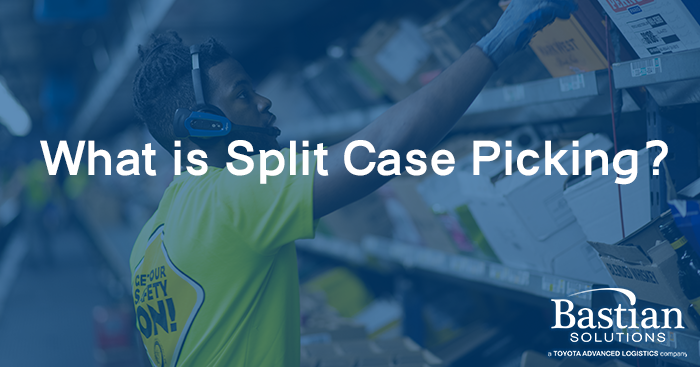
Split Case Picking Systems: A Beginner’s Guide, Part 1
JD Stumpf | 12 February 2019
Split case picking (also commonly called piece pick, each pick, broken case, or loose pick) is one of the most labor-intensive processes in the modern distribution center. With e-commerce now accounting for approximately 10% of all U.S. retail sales and growing steadily year over year, the demand for efficient and cost-justifiable split case picking order fulfillment systems tailored to specific business and operational requirements has never been higher.
What Is Split Case Picking?
Unlike full pallet or full case picking, split case picking requires individual units to be picked from individual locations and placed into a container, usually a shipping carton or tote. This requires more product handling and more cartons to process which adds up to, you guessed it, more labor.
Unique characteristics of a split case picking distribution centers frequently include:
- High SKU count ranging from 50,000-250,00 active at any given time
- The need to pick at all vertical levels of the DC, as it would be impractical to have 100% of the pick faces at ground level
- Multiple storage zones with various storage media to handle all the various shapes and sizes of SKUs
- An array of shipping carton sizes to handle including envelopes and jiffy bags
- Varying order profiles due to multi-channel fulfillment (ecommerce, wholesale and store fulfillment)
- Large volume fluctuations due to holiday shopping, flash sales and new product launches which can wreak havoc on SKU demand patterns and replenishment requirements
- Value-added service (VAS) requirements such as gift wrapping, gift messages, special labeling etc.
- Decreased order cycle time requirements as the market demand pushes for more same day/1-day/2-day shipping services
Split case picking distribution centers utilizing traditional storage media, primitive picking technologies, outdated software, static wave releases and static-routing conveyor systems are struggling to keep pace with increased order volumes and changing order profiles.
The significance and complexity of this topic has induced a surge of new technologies and advancements in software capabilities enabling incredible growth and development of split case picking systems.
What Is a Split Case Picking System?
A split case picking system could be characterized by having the following components:
- Storage Technology – What storage media are the items stored in? (shelving, racking, carton flow, GTP, etc.)
- Picking Operators – Who picks the items? (humans/robots/machines)
- Transport Methodology – How do orders move through the picking process? (carts/autonomous robots/conveyor)
- Picking Methodology – Are operators picking by item or by order? (discrete, discrete batching/cluster, batching, waving)
- Picking Technology– What technology are the picking operators using to facilitate the picking process? (paper/RF/PTL/PTV/GTP/robots/dispensers/A-frames etc.)
- Sortation Methodology (if batching/waving) – Are items being sorted to orders manually or automatically? (manual put wall/ automated put wall/ unit sorter)
Now that you understand what split case picking and split case picking systems are, continue to Part 2: Options for Designing a Split Case Picking System.
J.D. is a Senior Consulting Engineer with Bastian Solutions out of Denver, CO. He received both his Bachelor and Master of Science in Industrial Engineering from the University of Missouri. His specialties include data analysis and modeling, simulation, warehouse design & operational excellence. Experience includes: eCommerce, Footwear/Apparel Retail, Health, Beauty and Cosmetics and Consumer Electronics.
Comments
No comments have been posted to this Blog Post
Leave a Reply
Your email address will not be published.
Comment
Thank you for your comment.